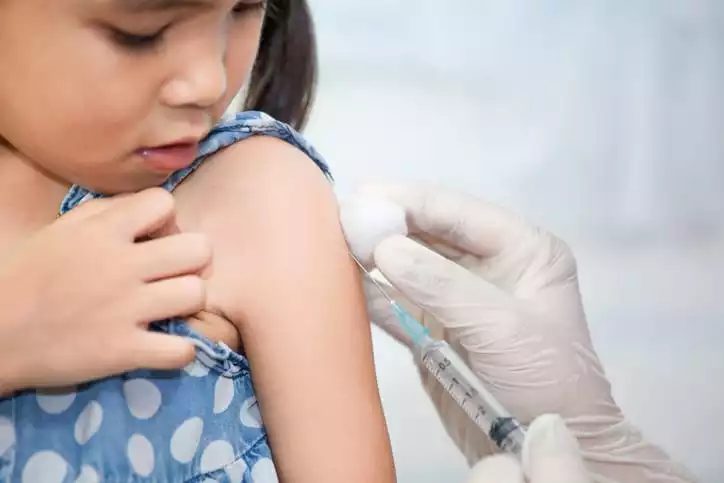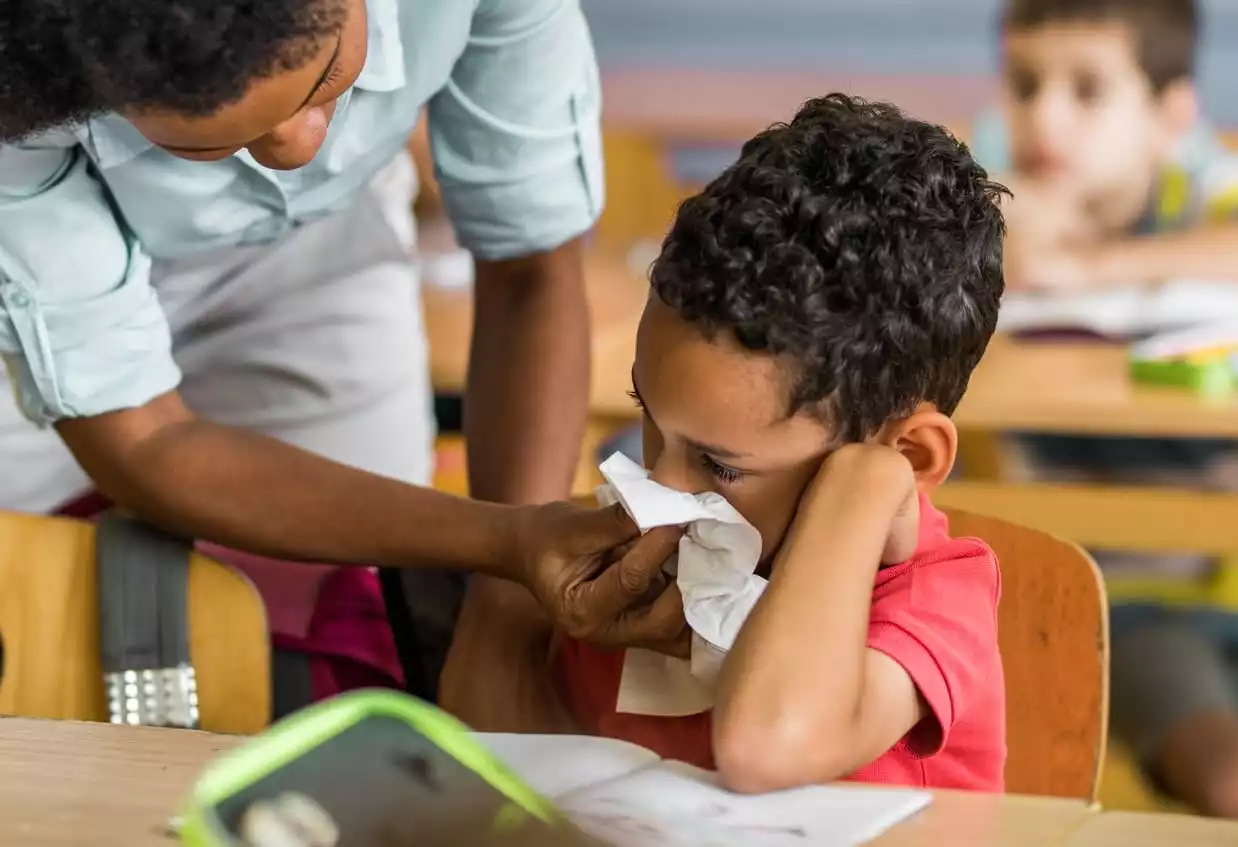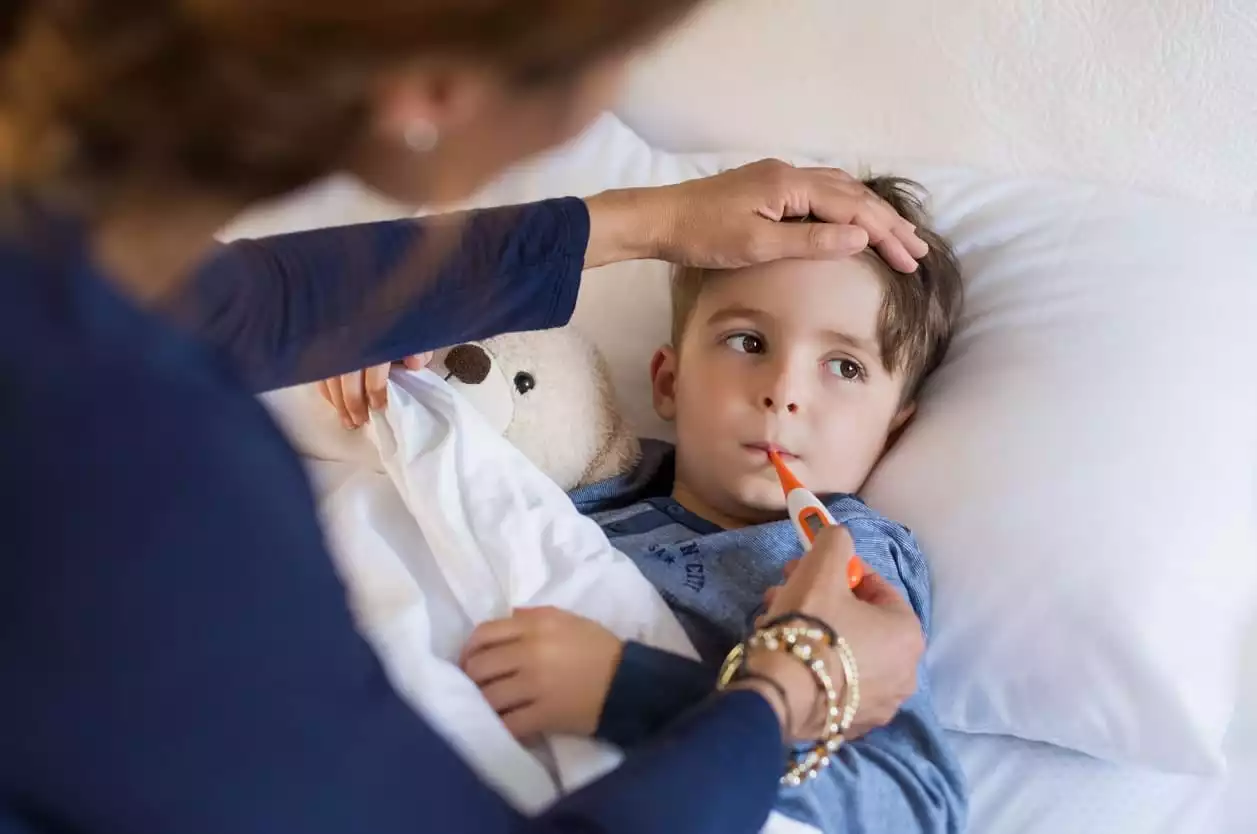
We have good news – well, depending on who you ask, anyway. Back-to-school time is just around the corner, and that means it’s almost time for little ones to head back into schools. For parents, it means having more time in the day to get things done. For kids, it’s a chance to learn and grow – all while being exposed to thousands of school viruses like the common cold and influenza.
The trouble with that is that little ones come home every day, carrying all of those germs with them.
They become ill and often pass the school viruses to their siblings or parents, creating a household of chaos until everyone recovers.
In some cases, these viruses can even be passed back and forth multiple times.
As a parent, it’s your job to keep your child safe – but you can’t exactly keep them secluded indoors until cold and flu season passes.
Use these 6 tips to steer clear of back to school viruses and improve your family’s chances of staying healthy all year long.
Solution 1: Teach Good Hand-Washing Strategies
Hands come into contact with more germs in the run of a day than any other body part.
Even your feet don’t encounter as many pathogens because they spend most of the day tucked into shoes or socks.
The bad news about that is our hands are also a big part of how we interact with other humans and interface with objects, both at home and at school.
Good hand-washing strategies help to ameliorate this exposure by rinsing away school viruses and germs before they enter the body.
But just 28 percent of kids know how to wash their hands properly – and means much more than just rinsing quickly.
Teach your kids to wash often and wash well, with soap, for at least 20 seconds.
Remind them not to touch taps or paper towel dispensers directly after washing; instead, pull the paper first and use it to cover the hands before they engage in these tasks.
For times when they can’t wash, it’s okay to use hand sanitizer – just don’t rely on it too much.
Over-reliance can play a role in disease resistance, which may put us all at risk for difficult-to-treat infections.
Use it sparingly, and only when needed.
Solution 2: Fix Poor Nutrition Issues
A healthy diet is your child’s best defense against back to school viruses – and bacteria, too.
The body has an easier time fighting off these school viruses when it has the nutrients it needs to function and be well.
If your child is feasting on sugar with a side of soda every single day, and little else, he or she may be deficient in critical immune-boosting vitamins and minerals, such as Vitamin C, D, E, A, and omega fatty acids.
Granted, it isn’t always easy to get kids to eat healthy. Some little ones are notoriously picky or even have food sensitivities.
If you’re really struggling to come up with solutions, remember that some compromise is better than none.
A child who eats homemade healthy chicken nuggets made from chicken breast is far better off than one who eats McDonald’s every day instead.
Similarly, a glass of 50% juice, 50% water, is far better than a cold Coke.
If you’re one of the unlucky parents who has a severely choosy child, or if your little one has sensitivity issues that make it difficult to get adequate nutrition, speak with your pharmacist.
Vitamin supplements and nutritional shakes aren’t as suitable for intake as food, of course, but they can help temporarily while you improve habits.
Solution 3: Send Kids with Bottled Water
Back in the ‘50s, everyone thought it was practically a miracle when schools started putting water fountains in.
How easy it was for little ones to stay hydrated!
The problem, of course, is that fountains are a magnet for germs.
All of those mouths touch the device, passing on viruses and bacteria alike.
Furthermore, school water is often drinkable but may be questionable in quality.
In extreme cases, viruses like Legionnaires Disease have been identified in older school water systems.
Water is frequently hard, with high mineral content, with a “city water’ flavor that’s undesirable and unpalatable.
The simple solution to both issues is to send your child to school with a 1-liter bottle of water.
A chilling thermos is perfect for this approach, and ensures your little one doesn’t need to share the “fountain of germs” with anyone who might be sick.
Solution 4: Encourage Good Sleep Habits
We live in a world where kids are inundated by technology, high light levels and excitement.
That’s fun for your kids, but it can also encourage bad sleep habits as little ones fight to stay up late with their tablet, smartphone or PC.
Children raised in today’s world get less sleep and often sleep less restfully when they do.
Why is a lack of sleep such a problem?
Sleep plays a critical role in body function; without it, the human body is unable to sustain itself long-term.
Going without sleep altogether can quite literally be fatal, but even chronic, low-level sleeplessness has consequences.
Firstly, researchers believe that lack of sleep may hamper immune function, even after as little as one or two sleepless nights.
Sleep is when your immune system is at its strongest, repairing damage to the body. Not getting enough makes it harder for your child to fight off viruses and infections.
Now, new studies are also revealing a link between chronic childhood sleep problems and depression/anxiety later in life.
How much sleep your child gets now could literally be the difference between being healthy and happy in adulthood and struggling long-term.
Just how much sleep is enough?
The CDC recommends 10 to 11 hours for children under 12.
Solution 5: Keep Your Sick Kid Home
No one wants to have children miss school (okay, maybe the kids), but sometimes, it really is best to keep your little ones home.
If your child is sick with a very obvious cold or flu, don’t force them back when they’re still feeling lethargic, sneezing, or coughing unless your doctor tells you it’s okay.
The second they arrive, they’re spreading those school viruses to other classmates, making them a part of the germ factory problem.
This is especially true for school viruses, which can be dangerous, like measles, mumps, chicken pox, and and respiratory syncytial virus (RSV).
The first three are unfortunately making a comeback due to false perceptions of vaccinations and anti-vaccination trends, and can have deadly consequences for kids.
The last, RSV, often occurs under age 2, but can rarely occur later in childhood.
RSV is usually mild in older children, but they can carry it home to infant siblings, who have a much higher risk for complications.
Solution 6: Get Vaccinated to Stay Away From School Viruses
Speaking of vaccinations…if your child hasn’t yet been vaccinated for the most common viruses, there’s no time like the present.
Inoculations are now available for everything from measles, mumps, and rubella to diphtheria, H1N1, and even the most common flu virus. This is an effective away to protect against back to school viruses.
It’s best to seek out vaccinations a few weeks before school starts for the most effective coverage.
In most cases, it takes at least a few days or weeks for your child’s body to build immunity.
And don’t forget to get immunized yourself; you can bring germs and viruses home from work and shopping, too!
We can’t tell you exactly which of these vaccinations your child should have without seeing his case file.
That decision depends on his individual health profile and whether or not he’s been vaccinated in the past.
But we’re always happy to speak with you about vaccinations here at the pharmacy!
Just give us a call.
Conclusion: How to Keep Kids Healthy During School
School viruses will always be around. Every now and then your children will fall sick with some sort of bacteria or virus.
However, there are extremely simple tips to keep your kids safe from these viruses passed around school:
- Wash your hands – well.
- Fix any nutrition problems.
- Send a water bottle to school with your kid(s).
- Encourage and practice good sleep habits.
- Keep sick children home to avoid the spread of germs.
- Get your children vaccinated.
These 6 tips will help to ensure that you’re children are successful, safe, and healthy throughout the school year!

 info@burtsrx.com
info@burtsrx.com

